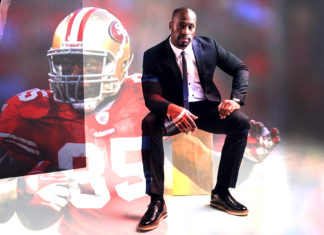Cupping therapy is a therapeutic technique that’s been used for millennia in Eastern medicine and has recently become popular in professional athlete populations with purported benefits of reducing inflammation, reducing pain, and generally expediting healing—essentially every buzzword you hear about any “new” recovery technique.
Cupping therapy came into the public eye when Olympian Michael Phelps was seen with circular bruise-type marks on his scapula (shoulder blade), neck, and shoulder.
The general concept of cupping therapy is to create an instrument-assisted suction effect on the skin. The trademark redness/purple comes from blood vessels expanding due to that effect. The original instruments used were hollowed-out bones that were used to suck out toxins from poisonous animal bites and skin lesions. The instruments evolved from the hollow bones to clay cups to modernized glass cups.
Some practitioners still use fire to kill all the oxygen and create a suction effect.
More frequently—and with considerably less liability—practitioners will use a rubber, pump device to suck out the air to create that suction.
Additionally, there’s a distinction between the above “dry” cupping and “wet” cupping, in which one round of mild cupping is completed, as usual, then small cuts are made followed by another round of cupping to physically draw out a small amount of blood.
I’m trying to keep this SFW so you can Google that yourself. But does it work? The research is still very much out on that. Some studies do show physiological changes and improved recovery, but those studies are nearly always poorly designed with the potential for loads of bias, with cupping being compared to a control of doing nothing. Those hardly carry any weight. Nearly all systematic reviews of the literature, which filter out crappy studies, show that the jury is still very much out and a lot more research is needed.
The one area where cupping therapy seems to have a foothold is with decreasing pain after activity in the short-term or decreasing chronic pain. That’s not surprising because pain exists on such a subjective scale and both those profiles—athletes trying to gain an edge or recover quicker and individuals stuck in chronic pain cycles—are often looking for a solution. That added input of cupping can be the solution because perception is the reality. If someone believes a therapy will help, it more than likely will, regardless of the actual changes taking or not taking place. The placebo effect is extremely powerful.
Additionally, cupping when done appropriately by the right provider doesn’t involve much risk. For that reason, I tell people to give it a try. The risk/reward calculation tilts heavily towards the reward.
To sum it all up, cupping may or may not actually make physical changes, but it’s a low cost, low-barrier-to-entry technique used for eons with great potential in pain relief and possibly recovery. For athletes looking for any edge without putting themselves at risk, cupping when done by an appropriately trained medical provider, can be an affordable, relatively safe option for pain relief.
References
- Aboushanab TS, AlSanad S. Cupping Therapy: An Overview from a Modern Medicine Perspective. J Acupunct Meridian Stud. 2018;11(3):83-87. doi:10.1016/j.jams.2018.02.001
- Al-Bedah AMN, Elsubai IS, Qureshi NA, et al. The medical perspective of cupping therapy: Effects and mechanisms of action. J Tradit Complement Med. 2019;9(2):90-97. doi:10.1016/j.jtcme.2018.03.003
- Bridgett R, Klose P, Duffield R, Mydock S, Lauche R. Effects of Cupping Therapy in Amateur and Professional Athletes: Systematic Review of Randomized Controlled Trials. J Altern Complement Med. 2018;24(3):208-219. doi:10.1089/acm.2017.0191
- Kim J-I, Lee MS, Lee D-H, Boddy K, Ernst E. Cupping for treating pain: a systematic review. Evid Based Complement Alternat Med. 2011;2011:467014. doi:10.1093/ecam/nep035
- Kim S, Lee S-H, Kim M-R, et al. Is cupping therapy effective in patients with neck pain? A systematic review and meta-analysis. BMJ Open. 2018;8(11):e021070. doi:10.1136/bmjopen-2017-021070
- Li J-Q, Guo W, Sun Z-G, et al. Cupping therapy for treating knee osteoarthritis: The evidence from systematic review and meta-analysis. Complement Ther Clin Pract. 2017;28:152-160. doi:10.1016/j.ctcp.2017.06.003













